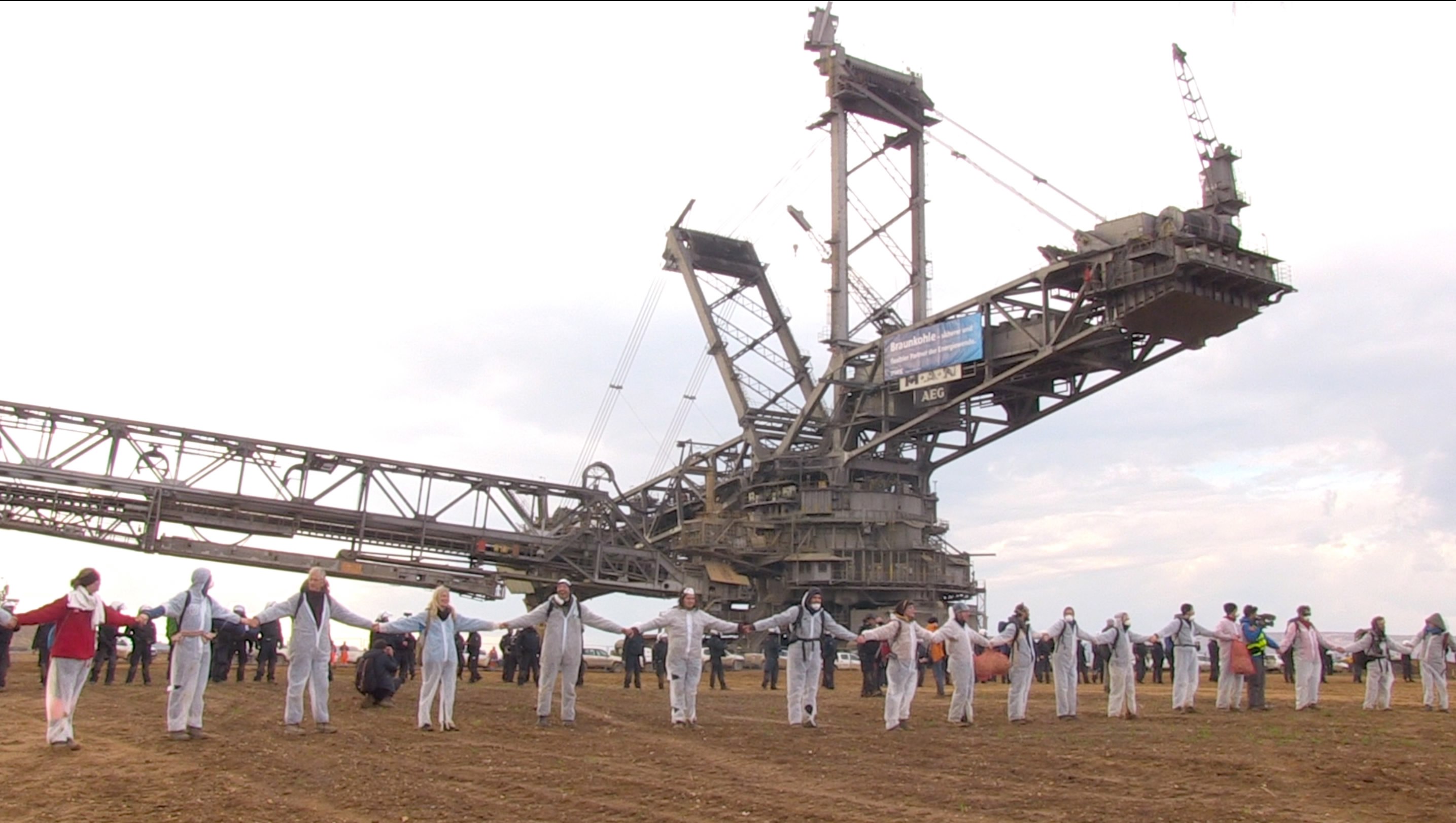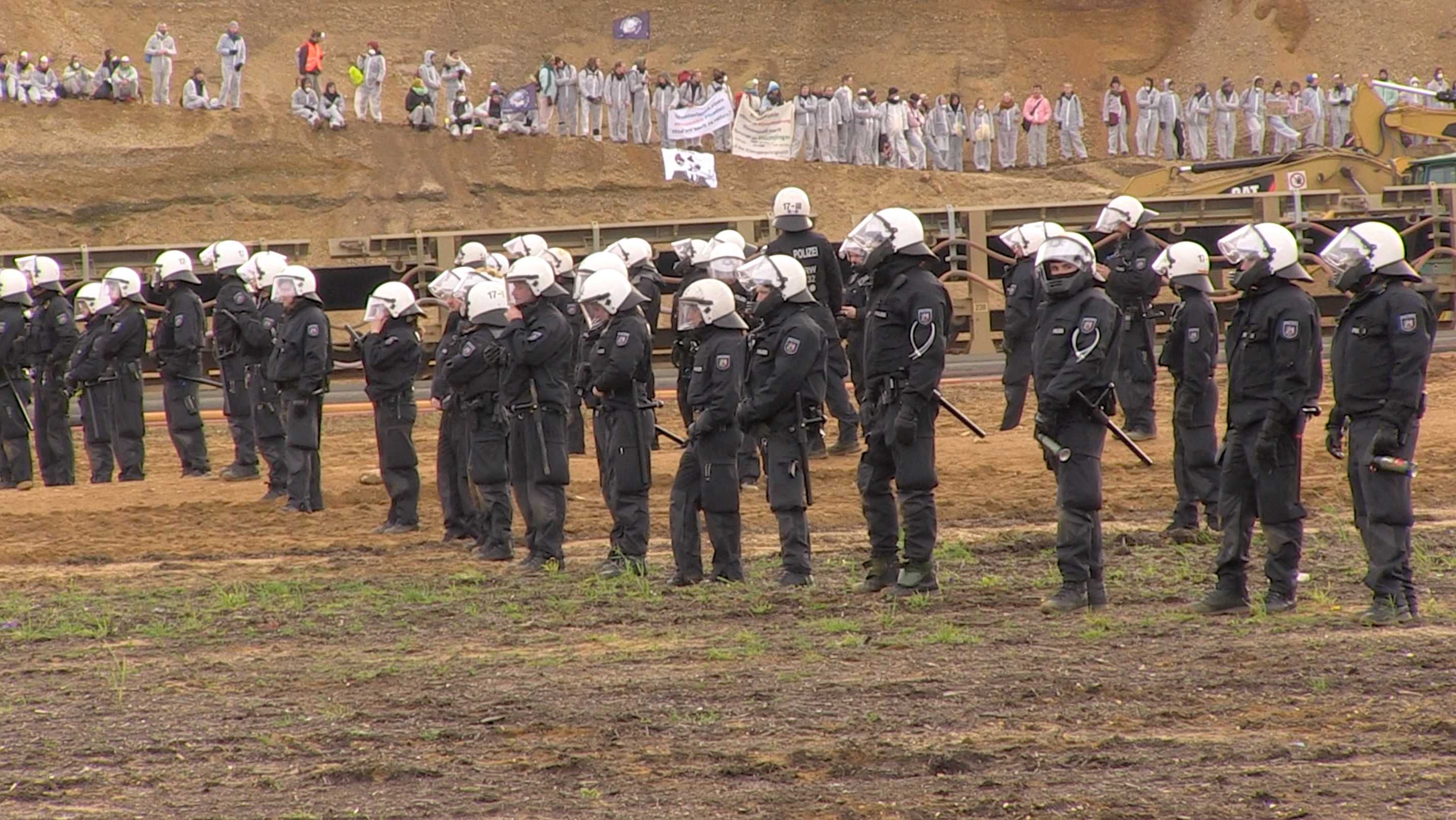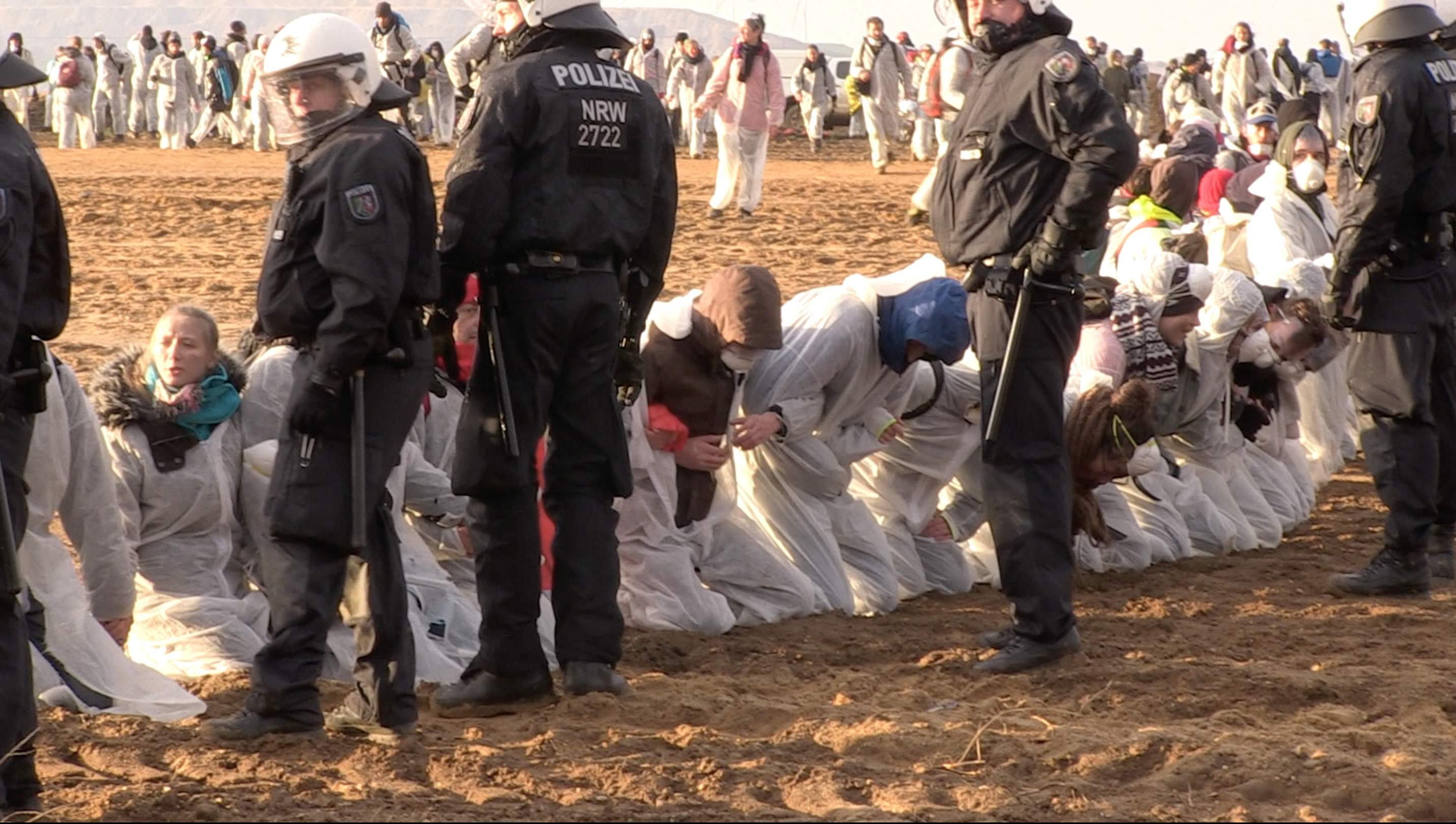
Politics
10:45, 07-Nov-2017
Protesters close one of Germany’s most active Coal mines
By Natalie Carney Gerçik

Ahead of this year’s United Nations environmental conference, COP23, in Bonn Germany, activists from Ende Gelände and other environmental activist groups from around the world, managed to temporarily shut down the Hambach lignite coal mine in the Rhineland coalfields, approximately 60 kilometers away from where delegates were arriving for the international summit.
While lignite coal is cheap to extract, it also produces a higher amount of carbon dioxide when burned.

Protesters make a human chain around the Hambach lignite coal mine near the small western German town of Buir. /CGTN Photo
Protesters make a human chain around the Hambach lignite coal mine near the small western German town of Buir. /CGTN Photo
The activists say the coal mine, along with three power stations in the area makes the Rhineland coalfields Europe’s biggest source of CO2.
Yasmin, who did not want to give her last name, biked all the way from the UK to take part in the protest. She accused Germany of double standards.
“Germany is trying to say that it is really progressive of its climate policies, but actually it has this massive coal mine that is really disruptive to the environment.”

Police watch over protesters at the Hambach lignite coal mine in the Rhineland coalfields. /CGTN Photo
Police watch over protesters at the Hambach lignite coal mine in the Rhineland coalfields. /CGTN Photo
Police watched over protesters dressed in white suits as they weaved their way through the small western German town of Buir toward the mine, demanding that government’s phase-out the extraction and production of coal for energy.
Coal produces more carbon pollution per unit of energy than gas and oil, yet it is still the source of roughly a third of global energy consumption.
In Germany, coal production accounts for around 40 percent of the country’s energy mix.

A protester chants “We are peaceful, what are you?” as police round up protesters in the Rhineland coalfields. /CGTN Photo
A protester chants “We are peaceful, what are you?” as police round up protesters in the Rhineland coalfields. /CGTN Photo
Germany has promised to cut greenhouse gas emissions 40 percent by 2020 compared with emissions in 1990, but has so far only managed to reach 27 percent and emission levels have started to rise again.
While a few confrontations between police on horseback and protesters were reported at the mine, Mattis Berger, an activist’s spokesman said he was happy with his group’s actions.
“We managed to stop the coal diggers. We demonstrated that we no longer have to wait for the politicians to make decisions to stop climate change and all the destruction that is resulting from this and we can do something right now and right here and stop coal production.”

Protesters at the Hambach lignite coal mine in the Rhineland coalfields. /CGTN Photo
Protesters at the Hambach lignite coal mine in the Rhineland coalfields. /CGTN Photo
The big question for the more than 15,000 delegates at COP23 is how to do so while leaving the lights on.
Natural gas may produce less carbon dioxide than coal or oil, but with only a handful of suppliers, there is concern about secure access.
And while renewable energy such as solar and wind is growing rapidly across the world, it still only accounts for a small percentage of total energy production.
COP23 is taking place in Bonn Germany until November 17.

SITEMAP
Copyright © 2018 CGTN. Beijing ICP prepared NO.16065310-3
Copyright © 2018 CGTN. Beijing ICP prepared NO.16065310-3